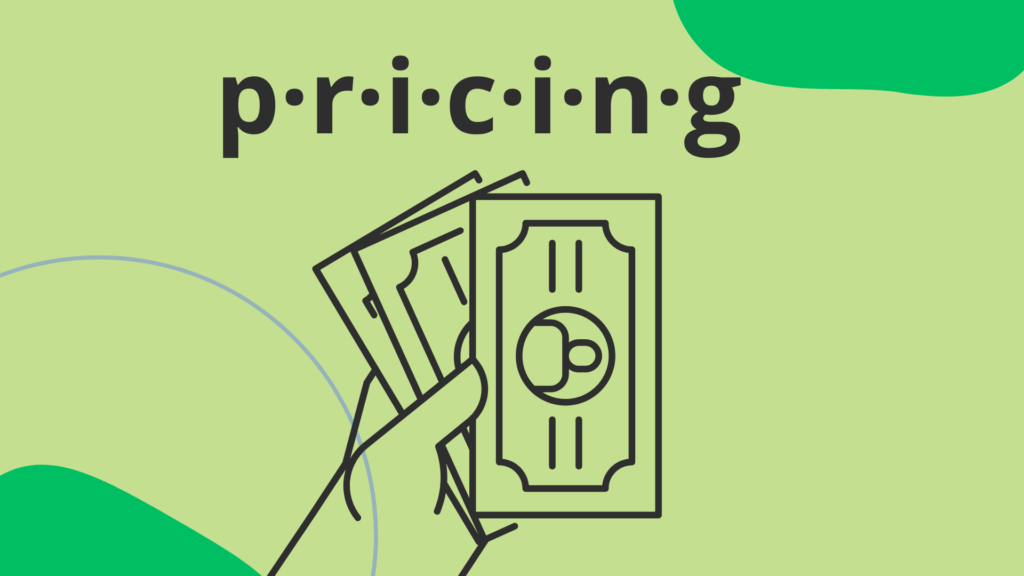One day, every aspiring entrepreneur faces the question:
The answers to these questions can be found by using the right pricing strategies.
Only effective miscalculation will help you attract customers, maximise profits, and establish your brand in the market. In this article, we will look at several strategies for aspiring entrepreneurs planning to sell on Amazon.
The strategy allows you to set a fair price for a product/service at a single time and to determine the need and frequency of its changes in a gradual manner. In other words, you can predict a decrease in profit due to seasonality and adjust it by increasing sales (which, in turn, can be achieved through promotions or sales).
However, when using dynamic pricing, be careful: too sharp and frequent jumps can undermine customer confidence and reduce customer loyalty. However, the strategy of “stable prices” also has its drawbacks: after a while, market conditions change, the product life cycle moves to a new stage, which invariably affects demand. Using this approach, you will have to have a reserve to reduce costs or ensure that your brand position is so strong that customers will be willing to pay no matter what.

This brings us to the first choice: “What is better: to use a single value that is stable when other conditions change or to adjust the numbers depending on the market situation?”.
Based on our past experience, we would advise you to maintain a certain balance between these extremes: enter the market with stable numbers and then use a “depletion” strategy. This means that after saturating a certain segment, you start to gradually reduce prices to expand the audience of buyers and give people with lower incomes the opportunity to test your product.
Over time, we gradually bring the price back to the original level, and sometimes even increase it (depending on how well you have built customer relations and marketing). And in order to maintain the captured market share (in particular, customers who have already tried the product but are not ready to buy it again at full price), we periodically hold sales, promotions, and discounts.
This approach will be optimal for Amazon, as the site’s target audience is mostly very prone to emotional purchases and often makes them from a position of: “as long as it’s cheap, you have to take it!”.
Next, let’s take a look at the main pricing methods used when launching a new product on the market.
One of the most basic strategies: a company sets a price based on the costs of producing and selling its products, as well as the profit it wants to make from each unit of sales.
Example: You buy a smartwatch in China at a cost of $200. It is also important to include logistics costs, packaging costs, taxes, store maintenance, advertising budget, labour costs, and everything else that gives a minus from your budget.
For example, let’s say it’s $50 per unit. Our gross costs are $250. Next, set the desired markup in %. For goods such as inexpensive electronics, it may well be 50%, for various small items (decor, mobile phone accessories, cosmetic products, etc.), the margin can reach 300%. In fact, the more expensive the product, the lower the % we can afford.
In total: $250 costs plus 50% = $375 – the cost with which you will enter the market.
Competitive pricing strategies are no less popular. Their method is based on actively monitoring the prices of other sellers and responding to changes in their policies.
Example: You decide to sell teddy bears on Amazon. Find your closest competitors (it is important that the product is as relevant to yours as possible). Then use a simple arithmetic mean formula:
A+B+C / the number of numbers in the set.

In our case: 29,95 + 48.99 + 37.99 + 39.99 + 21.99 = 178.91/5 = $35.7
Tip. Please note that many competitors use the “99” technique to stimulate sales. After all, our brains perceive 39.99 closer to 30 rather than 40, which makes the amount more attractive.
To skim the cream, you need to enter the market with an innovative product or add new options to an existing one. Using this strategy, you first calculate the price of your competitors, but deliberately overcharge them.
Example: Apple annually releases a new smartphone with unique features and capabilities that distinguish it from others on the market. At the initial stage, the price of the smartphone is set higher to attract early adopters and those willing to pay for advanced technology. Later on, as new models are released, the price of the previous version is reduced.
This model involves setting a low price for a new product in order to attract the maximum number of customers and quickly gain market share.
Example: Imagine a company releasing a new dating app. In order to attract the maximum number of users at the initial stage, they offer the app for free or at a nominal price. This allows them to quickly build a user base and increase product awareness.
Conclusion: As you can see, pricing strategies are quite variable and influenced by many factors: from the company’s future goals to the cost of production and opportunities to cut costs. It is difficult to say what will work effectively in each case.
Usually, in our work, we come to conclusions through practical tests and apply many years of experience to set a fair competitive price. And we are also ready to help new Amazon entrepreneurs in this matter. Contact us in any convenient way – the Nexus team of lawyers, marketers, and financial advisors is always at your service!